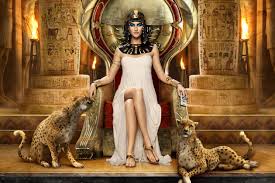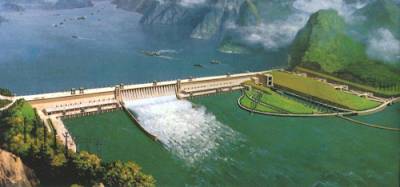The romance of Egypt is
pyramids, hieroglyphs, the Nile River, and Cleopatra.
 |
| http://i.ytimg.com/vi/YtKvRq8k1rc/maxresdefault.jpg |
 |
| http://bc05.ajnm.me/665003303001/201508/3681/ 665003303001_4434221129001_ vs-55d5b89ee4b0e3fce616178b-782203298001.jpg?pubId=665003303001 |
August 20, 2015, Egypt
was attacked by the Islamic State again. The attacks are in retaliation to the
latest laws put into place regarding terrorism. (BBC, Aug. 20, 2015). These
attacks have been happening more frequently throughout Egypt over the past few
years as yet another battle for power continues in Egypt. The constant changing
government of this country has been religious and economical. The majority of the changes surround the use
of religion to take over Egypt while politically wanting the entrance into the
rest of Africa and a short cut to the India.
In the beginning, well
before 3000 B.C. by some estimations, Egypt was the first established culture
due to the Nile River. Here the people
were able to have fresh water for crops and survival. However, with the rise and fall of the Nile,
many of the people were nomadic versus pastoral. From the beginning and to today, the Nile
River plays an integral part in Egyptian economic development. The push by most countries that take over
Egypt is to irrigate the Sahara for more agriculture and to help with the over
population of the urban areas of Egypt.
Scientists believe they
have found that man migrated out of Egypt and Ethiopia into Europe. (El-Awady,
June 18, 2015). The belief is man started in Africa and moved into the European
countries over the centuries.
Egypt is the English word
used for Hikuptah. Hikuptah means Temple
of the Soul of Ptah. The god Ptah, the
first Pharaoh, shows the importance the people of Egypt put on religion and
their gods. They believed that the Pharaohs were gods. At the traded with the
Mediterranean, they began to include their gods into their beliefs. These
beliefs would be the reason Cambyses II was able to conquer Egypt and the way
many of the countries conquered Egypt. Cambyses used their god beliefs of the animals by parading the animals first in battle.
 |
| http://www.the-athenaeum.org/art/full.php?ID=108972 |
Rome rule put the
taxation on the people that was great and when the Muslims invaded, even the
Coptic Church welcomed the change.
Muslim rule was not much different from the Egyptian way of life. Whoever held power was also the religious
leader of the country. Therefore, Islam
was a political religion and fit right into the Egyptian way of life. The reign
of Islam only lasted until the Ottoman Empire invaded in the 1500s. Since the Ottoman Empire was already Muslim,
the religious view did not change.
However, the difference in the Ottoman Empire and Muslim rule was that
the Ottoman’s incorporated their religion into Egypt and did not force their
religion on the people. Napoleon invaded
Egypt from France. After World War I,
the Ottoman Empire was replaced by the British.
The British did not so much get involved in the religion of Egypt as it
did in the economics of Egypt. The Suez
Canal is the major event during the British rule. It was a deal that the French and the British
for some time; however, the British completed it. It was a canal to help with trade between the
Mediterranean and the Red Sea. The canal
would open up further trade for Egypt. After World War II, Egypt was declared
independent from Britain. The Suez Canal
remains one of the biggest shipping lanes in the world.
 All of the above is said
to bring us back to Egypt in the 1990s and 2015. “The New Valley Project was the most
ambitious but not the only land reclamation project initiated by the Mubarak
regime during the late 1990s.” (Davis, Diana K., pg 50). The jump to this topic
is while religion played a huge part in everyday life for Egypt, and the
government used this to control the Egyptian nation. The countries coming into Egypt were doing so
to expand trade. Hosni Mubarak rule was
supported by the United States because he kept the Islam militants under
control, and he maintain a certain amount of peace with Israel. His rule in the land was almost thirty years;
this was the longest rule since the 1800s.
Since his resignation, Egypt has been in a constant state of
revolution. In the past four years,
Egypt has had five rulers and today the continued bombing in Cairo shows the
instability of their government. The question is still today whether “Egypt is
an emerging democracy.” (Sprusansky, 56-57). In Egypt, history is still unfolding as to what governmental body will
be in place next and will religious freedom prevail or will Islam control the
country with continued strife for the Christians of Egypt. The countries around
Egypt continue to watch these developments. It is important economically to see
who will win because so many countries trade resources with Egypt. The greatest of these at this time is oil.
Therefore, the world still looks to Egypt to see what it is going to do next.
All of the above is said
to bring us back to Egypt in the 1990s and 2015. “The New Valley Project was the most
ambitious but not the only land reclamation project initiated by the Mubarak
regime during the late 1990s.” (Davis, Diana K., pg 50). The jump to this topic
is while religion played a huge part in everyday life for Egypt, and the
government used this to control the Egyptian nation. The countries coming into Egypt were doing so
to expand trade. Hosni Mubarak rule was
supported by the United States because he kept the Islam militants under
control, and he maintain a certain amount of peace with Israel. His rule in the land was almost thirty years;
this was the longest rule since the 1800s.
Since his resignation, Egypt has been in a constant state of
revolution. In the past four years,
Egypt has had five rulers and today the continued bombing in Cairo shows the
instability of their government. The question is still today whether “Egypt is
an emerging democracy.” (Sprusansky, 56-57). In Egypt, history is still unfolding as to what governmental body will
be in place next and will religious freedom prevail or will Islam control the
country with continued strife for the Christians of Egypt. The countries around
Egypt continue to watch these developments. It is important economically to see
who will win because so many countries trade resources with Egypt. The greatest of these at this time is oil.
Therefore, the world still looks to Egypt to see what it is going to do next.
Bibliography
Alfred J., Butler. The Arab Conquest
of Egypt and the Last Thirty Years of Roman Dominion. 2nd ed. New York:
Oxford University Press, 1978.
Armanios,
Febe. Coptic Christianity in
Ottoman Egypt. New York: Oxford University Press, 2011.
Davis, Diana K., and Burke, Edmund, eds. Ecology and History:
Environmental Imaginaries of the Middle East and North Africa. Athens, OH, USA:
Ohio University Press, 2011. Accessed August 20, 2015. ProQuest ebrary.
"Egyptian Security Building in Cairo Rocked by Bomb
Blast - BBC News." BBC News. August 20, 2015. Accessed August 21, 2015. http://www.bbc.com/news/world-middle-east-33998536.
El-Awady, Nadia. "Egypt Identified as Ancient Gateway
out of Africa." Nature Middle East. June 18, 2015. Accessed August 20,
2015. http://www.natureasia.com/en/nmiddleeast/article/10.1038/nmiddleeast.2015.101.
Encyclopædia Britannica
Online, s. v. "Cambyses II", accessed
August 20, 2015,http://www.britannica.com/biography/Cambyses-II.
Erlikh, Haggai, and Isreal Gershoni. The Nile: Histories,
Cultures, Myths. Boulder, CO: Lynne Rienner Publishers, 2000.
Goody, Jack. The Logic of Writing and the Organization of
Society. Cambridge [Cambridgeshire]: Cambridge University Press, 1986. Accessed
August 20, 2015. ProQuest ebrary.
Jackson, Jack. Accessed August 21, 2015.
http://www.worldatlas.com/aatlas/infopage/aaaphotos/suezcanal.jpg.
Johansen,
Julian. Sufism and Islamic
Reform in Egypt: The Battle for Islamic Tradition. Oxford: Clarendon Press;
1996.
Sprusansky, D. (2014). Egyptian
Ministers Discuss Politics, Economy. The Washington Report on Middle
East Affairs, 33(4), 56-57. Retrieved from http://search.proquest.com/docview/1544159612?accountid=12085
Pictures:
Accessed August 21, 2015. https://upload.wikimedia.org/wikipedia/commons/thumb/2/27/The_lion_of_Egyptian_revolution_(Qasr_al-Nil_Bridge)-edit2.jpg/220px-The_lion_of_Egyptian_revolution_(Qasr_al-Nil_Bridge)-edit2.jpg.
Accessed August 21, 2015. http://bc05.ajnm.me/665003303001/201508/3681/665003303001_4434221129001_vs-55d5b89ee4b0e3fce616178b-782203298001.jpg?pubId=665003303001
Accessed August 21, 2015. https://upload.wikimedia.org/wikipedia/commons/thumb/2/27/The_lion_of_Egyptian_revolution_(Qasr_al-Nil_Bridge)-edit2.jpg/220px-The_lion_of_Egyptian_revolution_(Qasr_al-Nil_Bridge)-edit2.jpg.
El-Awady, Nadia. "Egypt Identified as Ancient Gateway
out of Africa." Nature Middle East. June 18, 2015. Accessed August 20,
2015. http://www.natureasia.com/en/nmiddleeast/article/10.1038/nmiddleeast.2015.10











